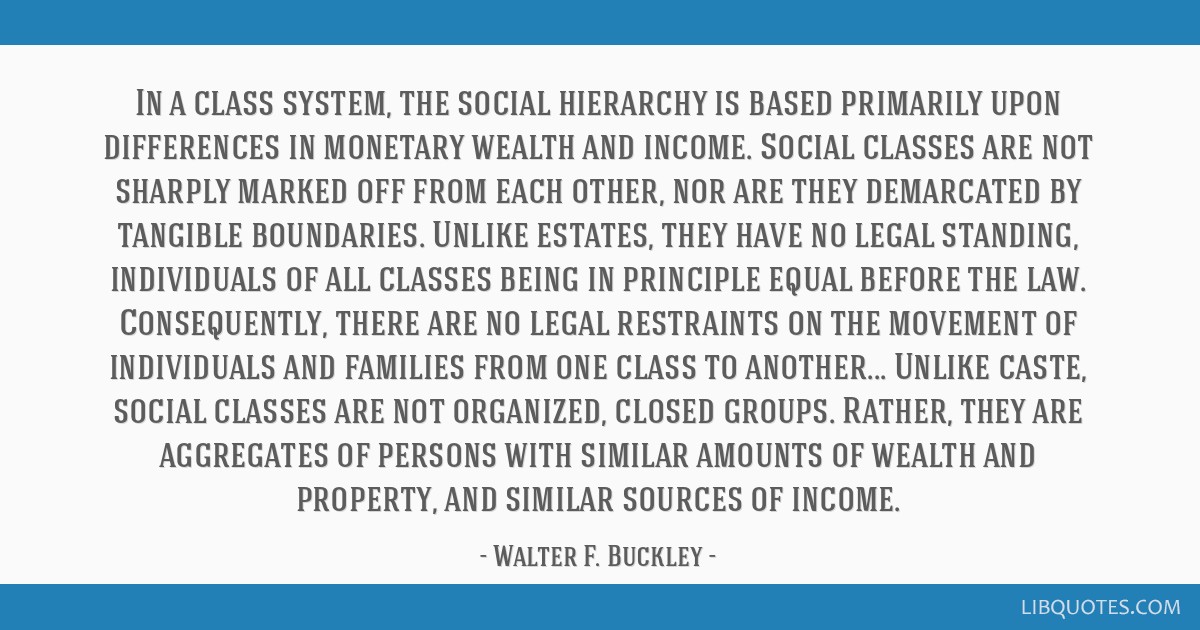In a class system, the social hierarchy is based primarily upon differences in monetary wealth and income. Social classes are not sharply marked off from each other, nor are they demarcated by tangible boundaries. Unlike estates, they have no legal standing, individuals of all classes being in principle equal before the law. Consequently, there are no legal restraints on the movement of individuals and families from one class to another... Unlike caste, social classes are not organized, closed groups. Rather, they are aggregates of persons with similar amounts of wealth and property, and similar sources of income.
p. 15; as cited in: Ronald J. Samuda (1998) Psychological Testing of American Minorities: Issues and Consequences. p. 47. - Class and society (1969)























